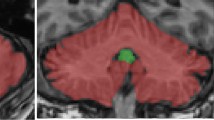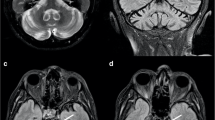Abstract.
Context:
Brain atrophy is an indicator of diffuse brain pathology that appears even in the early stages of multiple sclerosis (MS). Magnetic resonance imaging (MRI) techniques used in clinical trials suggest a correlation between ventricular enlargement and axonal pathology and clinical disability in MS.
Objective:
To evaluate by transcranial sonography (TCS) and MRI ventricular diameters in order to assess prospectively the development of brain atrophy in MS.
Setting:
MS outpatient clinic of a university hospital.
Patients and Methods:
38 MS patients (27 females, 11 males) were followed up for 2 years. Ventricular diameters (third ventricle, right and left lateral ventricle) were determined by TCS at baseline, 12 and 24 months and correlated with clinical disability (Expanded Disability Status Scale, EDSS), and the Multiple Sclerosis Functional Composite Score (MSFC). MRI was performed at study entry and after two years.
Main outcome measure:
Correlation of ventricular diameters measured by TCS and MRI with assessment of clinical disability in MS patients at baseline and after two years.
Results:
TCS and MRI measurements especially of third ventricle diameter matched closely at study entry and after two years (r = 0.9; p < 0.0001). At all time points the width of the third ventricle was significantly correlated with clinical disability (EDSS: r = 0.6, p < 0.01; MSFC: r = –0.6, p < 0.02). In the follow-up over 2 years there was an increase of the width of the third ventricle in comparison with study entry (p < 0.002). Increase of third ventricular width at study entry was associated with higher EDSS levels after 2 years (p = 0.01).
Conclusion:
Assessment of ventricular diameters by TCS is a reliable tool with which to monitor brain atrophy in the longitudinal follow-up of MS patients. Because TCS is a simple, inexpensive, non-invasive and generally available bedside-test it may be used in clinical practice as well as in therapeutic trials to assess brain atrophy.
Similar content being viewed by others
Author information
Authors and Affiliations
Corresponding author
Additional information
(†died unexpectedly 05. 08. 2003)
Rights and permissions
About this article
Cite this article
Kallmann, BA., Sauer, J., Schließer, M. et al. Determination of ventricular diameters in multiple sclerosis patients with transcranial sonography (TCS). J Neurol 251, 30–34 (2004). https://doi.org/10.1007/s00415-004-0265-y
Received:
Revised:
Accepted:
Issue Date:
DOI: https://doi.org/10.1007/s00415-004-0265-y




